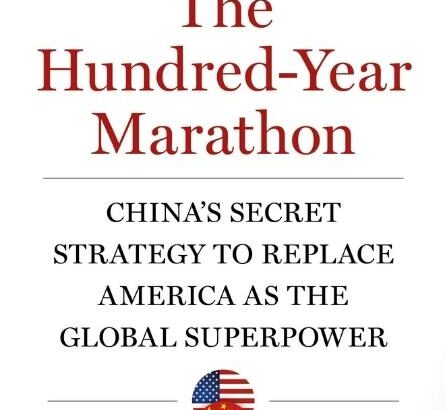#1 National bestseller "[pillsbury] is correct to assert that China constitutes, by far, the biggest National challenge to America's position in the world today."-The wall Street Journal for more than forty years, the United States has reached out to China, helping it develop a booming economy and take its place on the world stage, in the belief that there is little to fear-and everything to gain-from China's rise. But what if the Chinese have had a different plan all along? The hundred-year marathon reveals China's secret strategy to supplant the United States as the world's dominant power, and to do so by 2049, The one hundredth anniversary of the founding of the people's Republic. Michael pillsbury, who has served in senior National security positions in the U.S. Government since the days of Richard Nixon and Henry Kissinger, draws on Chinese documents, speeches, and books (many of them never translated into English) to reveal the roots of this strategy in traditional Chinese statecraft and track how the Chinese are putting it into practice today. Pillsbury shows how American policy make Rs have been wilfully blind to these developments for decades--and he includes himself in that critique, as he was once a leading voice in favour of aiding China. He also calls for the United States to design a new, more competitive strategy toward China as it really is, and not as we might wish it to be. Now featuring a new afterword, the hundred-year marathon is a wakeup call for all Americans concerned about how we have misread the greatest National security challenge of the twenty-first century.
Book Category: Featured Books
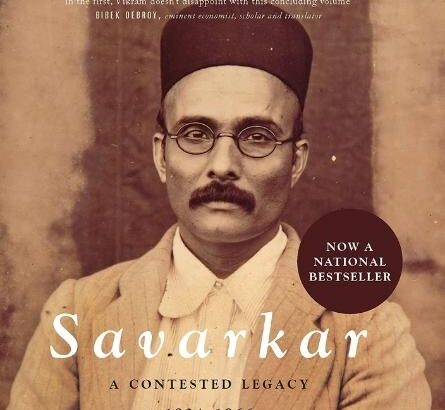
Savarkar (Part 2)
Was Savarkar really a co-conspirator in the Gandhi murder?Was there a pogrom against a particular community after Gandhi's assassination?Decades after his death, Vinayak Damodar Savarkar continues to uniquely influence India's political scenario. An optimistic advocate of Hindu-Muslim unity in his treatise on the 1857 War of Independence, what was it that transformed him into a proponent of 'Hindutva'? A former president of the All-India Hindu Mahasabha, Savarkar was a severe critic of the Congress's appeasement politics. After Gandhi's murder, Savarkar was charged as a co-conspirator in the assassination. While he was acquitted by the court, Savarkar is still alleged to have played a role in Gandhi's assassination, a topic that is often discussed and debated. In this concluding volume of the Savarkar series, exploring a vast range of original archival documents from across India and outside it, in English and several Indian languages, historian Vikram Sampath brings to light the life and works of Vinayak Damodar Savarkar, one of the most contentious political thinkers and leaders of the twentieth century.
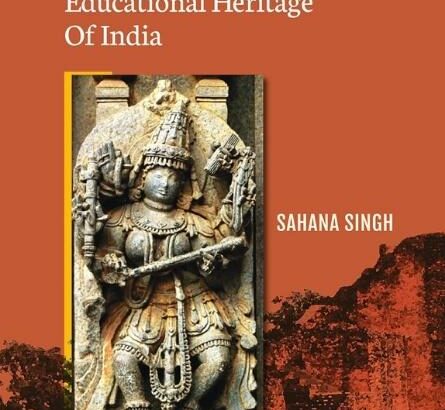
Revisiting The Educational Heritage Of India
Long before the first European universities appeared, India already had multi-disciplinary centres of learning that fuelled a knowledge revolution around the world. This book fills a dire need to chronicle the great educational heritage of India. It describes a unique ecosystem which ensured that Gurus and Acharyas handed the lamp of learning to generations of students. As the author puts it, “When swords quenched their thirst and famine ravaged the lands, Indians still held on to their truth that there was nothing more purifying than knowledge.” She has collated information from oral history, local lore, travelogues, surviving literature, inscriptions, salvaged manuscripts and accounts of scholars and laity. Historically, the book covers a vast time span from ancient India’s traditions to the deliberate destruction of its heritage. It also outlines steps that can be taken today to incorporate the most relevant aspects of ancient learning systems into the current structure of school and university education.
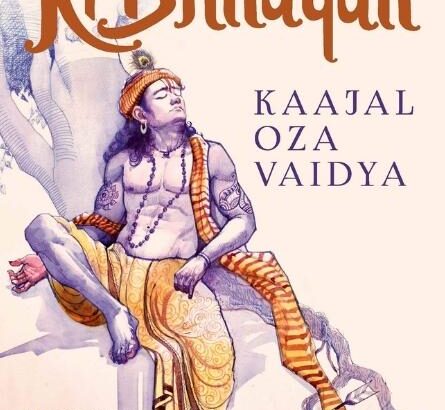
Krishnayan
‘You will suffer a beastly death—die lonely, helpless and aggrieved.’Gandhari’s curse has come true. Near the confluence of the Saraswati, Kapila and Hiranya rivers, Krishna lies under an Aswattha tree, fatally wounded by Jara’s arrow. In his final moments, he reminisces about his time in the mortal world, and the women in his life appear before him. The self-assured, erudite royal consort Rukmini, the most precious of his 16,008 wives, asks him why he is embarking upon moksha alone when she was a fellow traveller on his journeys through dharma, artha and kama. Satyabhama, who came into his life carrying the Syamantak diamond in her trousseau, and dazzled him with her beauty and charm, grapples with the meaning of their marriage. Draupadi, his friend and confidante, is eager to know if Krishna ever desired her romantically. And Radha, one with Krishna in heart and soul, although she is another man’s wife, prepares again to free him of all ties, like she did when he had left Gokul.Kaajal Oza Vaidya’s Krishnayan, stitched together with what these four extraordinary women meant to Krishna is at once vivid and intense and also tender, but not for a moment weighed down by sentimentality. Indisputably the biggest bestseller of all time in Gujarati literature—having sold over 200,000 copies and gone into more than twenty-eight editions—it is a finely wrought portrait of a mortal God who is said to be the all-embracing consciousness of the universe itself.
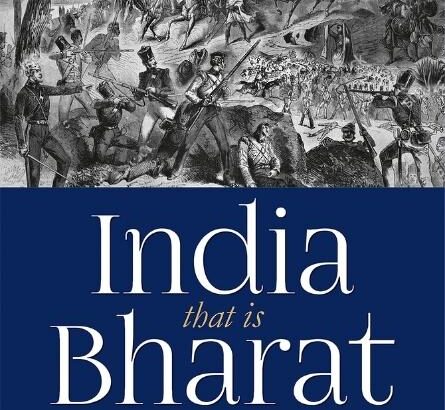
India That is Bharat
India, That Is Bharat, the first book of a comprehensive trilogy, explores the influence of European 'colonial consciousness' (or 'coloniality'), in particular its religious and racial roots, on Bharat as the successor state to the Indic civilisation and the origins of the Indian Constitution. It lays the foundation for its sequels by covering the period between the Age of Discovery, marked by Christopher Columbus' expedition in 1492, and the reshaping of Bharat through a British-made constitution-the Government of India Act of 1919. This includes international developments leading to the founding of the League of Nations by Western powers that tangibly impacted this journey. Further, this work also traces the origins of seemingly universal constructs such as 'toleration', 'secularism' and 'humanism' to Christian political theology. Their subsequent role in subverting the indigenous Indic consciousness through a secularised and universalised Reformation, that is, constitutionalism, is examined. It also puts forth the concept of Middle Eastern coloniality, which preceded its European variant and allies with it in the context of Bharat to advance their shared antipathy towards the Indic worldview. In order to liberate Bharat's distinctive indigeneity, 'decoloniality' is presented as a civilisational imperative in the spheres of nature, religion, culture, history, education, language and, crucially, in the realm of constitutionalism.
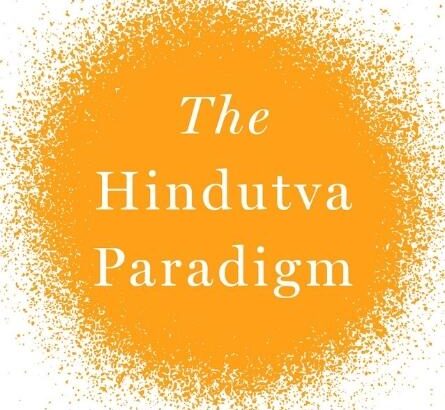
The Hindutva Paradigm: Integral Humanism and Quest for a Non-Western Worldview
Seven decades ago, a new global order emerged. However, as the COVID-19 pandemic rages across the planet, those older ways of being are under unprecedented stress. Already, a new world order is taking shape—one that will put long-standing agenda items like trade, commerce and defence on the backburner. In a post-pandemic world, they will be edged out by issues like climate change, holistic healthcare, education for innovation and creativity, as well as the management of frontier technologies like artificial intelligence, robotics, blockchain and big data. Human dignity and human rights will be critical issues in this modern reality. To represent the changed actuality of the twenty-first century, global governance needs fresh ideas and novel institutions.More than five decades ago, Deen Dayal Upadhyay articulated a coherent economic philosophy, at the core of which was human-centric development.In The Hindutva Paradigm, author and thinker Ram Madhav provides clarifying insights into the reasoning of a philosopher who has remained an enigma through the decades. At the crossroads where we stand, this refreshing and stimulating philosophy could be the answer to managing the new world order.
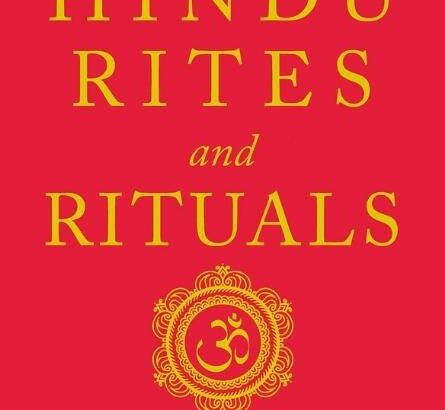
Hindu Rites and Rituals: Where They Come from and What They Mean
Why is the tulsi considered sacred? What is the significance of namaste? Why do Hindus light a lamp before performing a ritual? Why is it forbidden to sleep facing the south? Why do Hindus chant 'shanti' three times after performing a rite? Millions of Hindus the world over grow up observing rites, rituals and religious practices that lie at the heart of Hinduism, but which they don't know the significance of. Often the age-old customs, whose relevance is lost to modern times, are dismissed as meaningless superstitions. The truth, however, is that these practices reveal the philosophical and scientific approach to life that has characterized Hindu thought since ancient times; it is important to revive their original meanings today. This handy book tells the fascinating stories and explains the science behind the Hindu rites and rituals that we sometimes follow blindly. It is essential reading for anyone interested in India's cultural tradition.
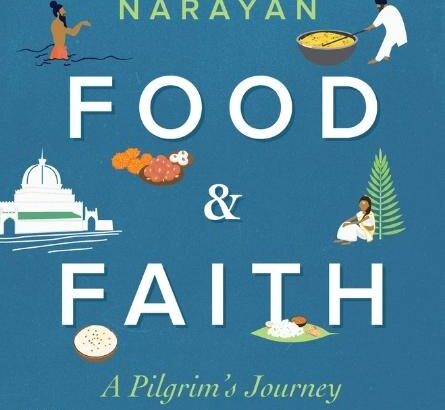
Food and Faith: A Pilgrim’s Journey through India
Why do we pray?What is the role of religion in your life today? Do you commune with the divine through rituals? Or is it a comforting routine, going to church or temple once a week or month? Are these questions making you uncomfortable? Do you think religion is a private act to be done in the confines of one's home, with family, and not something to declare publicly? These are the questions this book seeks to answer. Shoba Narayan travels across some of the most prominent places of worship in India and presents to her readers the mythologies, histories and contemporary relevance of these sites.
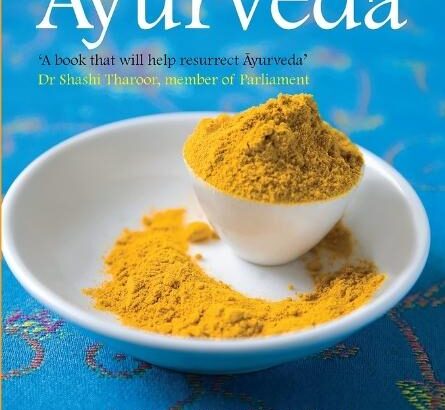
Everyday Ayurveda
Everyday Ayurveda is the perfect lifestyle guide designed to maximize health, longevity, and happiness the natural way.Do you sometimes feel tired, lethargic and spiritless? How can Ayurveda help in a simple, practisable manner?Time is scarce and precious in today's world, and we seek solutions that are quick. While allopathic medicine tends to focus on the management of disease, the ancient study of dinacharya provides us with holistic knowledge of preventing disease and eliminating its root cause. Taking us through a day in the life of Ayurveda living, Dr Bhaswati Bhattacharya illustrates the core principles of Ayurveda and shows us how to incorporate these in our routine. She explains the logic behind the changes she recommends and how they benefit us. Informative and accessible, Everyday Ayurveda is the perfect lifestyle guide designed to maximize health, longevity and happiness the natural way.Praise for Everyday Ayurveda'Dr Bhaswati has written a book that will help resurrect the knowledge I grew up on, using scientific logic for modern scientists, and slokas for ancient scientists and observers. Her writing will appeal to the intelligent seeker dedicated to achieving a good life using conscious self-care, attention to healthy habits and respect for the wisdom of the ancients.' - Shashi Tharoor, member of parliament 'Bhaswati combines her talents as a healer with passion for sharing truly healing medicine. She has written from the song in her heart that celebrates light, sound and connection with nature.' - Pandits Rajan and Sajan Misra, Padma Bhushan recipients and classical Hindustani vocalists of the Banaras Gharana 'Bhaswati is uniquely able to diagnose like good medical doctors of the past, watching the patient rather than the test result. With a person-centered approach, this book is a tribute to Ayurveda and explains why we should pay more attention to the signals our bodies give us.' - Ashok H. Advani, founder publisher, The Business India Group'Bhaswati has preserved the Sanskrit from which dinacharya emanates. Through her unending curiosity and dedication as a well-trained physician, scientist and professor, she has brought basic concepts of Ayurveda to light. She has toiled and delved deeply with engaging clarity, a fine mind and an extraordinarily connected soul. She teaches Ayurveda authentically because it is in her heart.' - Dr Vd. Chandrabhushan Jha, former dean, faculty of Ayurveda, Banaras Hindu University and professor emeritus of Rasa Shastra'Ancient Ayurvedic rishis developed dinacharya, a way of maintaining normal body rhythms and staying healthy. Assisted by logic and personal accounts, Dr Bhaswati brings dinacharya alive in this book and reinforces its importance and necessity, especially in busy lives.' - Vd. Partap Chauhan, founder of Jiva Ayurveda 'Dr Bhaswati unlocks the age-old tenets of Ayurveda contained in cryptic Sanskrit verses. Her strong roots in tradition and willingness to branch out to the modern world make this book precious, like any true vidya.' - Dr. PR Krishnakumar, Padma Shree recipient and managing director, Arya Vaidya Pharmacy (Coimbatore)'As a fellow Fulbright Scholar, I have witnessed Dr Bhaswati devote her life to researching and preserving Ayurveda, and bringing it back to the hands and hearts of people.' - Gautam Gandhi, former head of new business development, Google India
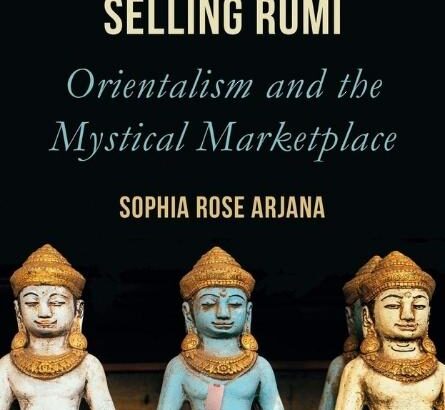
Buying Buddha, Selling Rumi : Orientalism and the Mystical Marketplace
From jewellery to meditation pillows to tourist retreats, religious traditions – especially those of the East – are being commodities as never before. Imitated and rebranded as ‘new age’ or ‘spiritual’, they are marketed to secular Westerners as an answer to suffering in the modern world, The ‘mystical’ and ‘exotic’ East promising a path to enlightenment and inner peace. In buying Buddha, selling Rumi, Sophia rose arjana examines the appropriation and sale of Buddhism, Hinduism and Islam in the West today, the role of mysticism and Orientalism in the religious marketplace, and how the modification of religion impacts peoples lives.
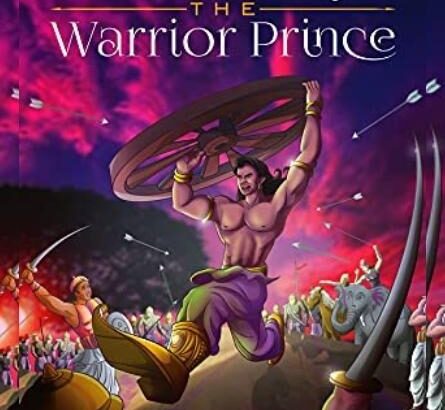
Abhimanyu: The Warrior Prince
Born to Arjuna, Abhimanyu was Krishna's favourite nephew and the grandson of Indra. He was a maharathi at the age of sixteen, who was destined to rule Hastinapur. The apple of everyone's eye, why did fate so cruelly cut short his life? Why didn't Krishna save him? Why couldn't his legendary warrior father save him?Abhimanyu is the story of a young man in his quest for love, valour and honour. Experience his struggles to become a great warrior, and join him in his quest to find his father. Exult as he finds love in Uttara and enjoys life with his family. Accompany him to the battlefield where his destiny awaits him.One of the greatest heroes of the Mahabharata, the sixteen-year-old Abhimanyu single-handedly brings the Kaurava army to the verge of defeat but is ultimately killed in cold blood by treachery. This is also the tale of how an act of adharma seals the fate of the Kauravas.Fast-paced and packed with action, this retelling, based on Vyasa's Mahabharata and the rich folklore of India, narrates a saga of bravery. This is the story of a devoted son, a loving husband, a father who never saw his son and an emperor whose fate stopped him from wearing the crown.

A Bad Place
When the twin disasters of their tenant’s suicide and a financial setback strike on the same day, Aniket and Suchitra “Su” Shah are forced to move into the suicide house along with their five-year-old daughter Reva. But Row-house no 49 is no ordinary house. Su soon realizes that the suicide of her tenant was a mere harbinger of the imminent evil. Who are the young mother and baby Su keeps seeing in the bedroom where her tenant killed herself? And why does the mother; an obvious victim of domestic abuse, insists on telling Su “he says he loves us”?^Trapped on the horrors that only she can see on one hand, and the inexorable deterioration of her marriage on the other, Su realizes that the time is running out for her family. But when the evil that resides in Row-house no 49 casts its eye towards Reva, the mother in Su will go to any length, even to murder, to protect her child.
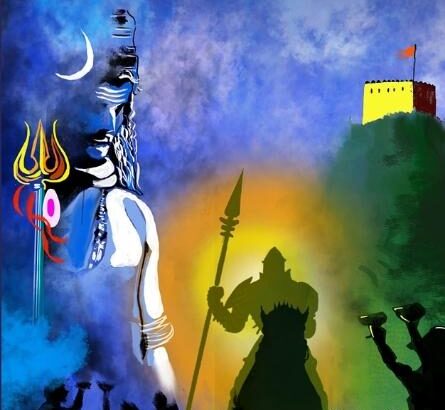
MAHARANAS: A Thousand Year War for Dharma
The book that is going to become as sacred as scriptures in each Hindu home. The book that will destroy the lies woven around the glorious Hindu resistance for one thousand uninterrupted years to Islamic invaders of various hues.
The book that will reveal the truth of the greatest Dynasty, not just the greatest Hindu Dynasty, not just the greatest Dynasty of Bharat, but the greatest Dynasty in the world: The Sisodiyas of Mewad. The Avataras who fought invaders non-stop for 1000 years, who endured all hardships, who refused to surrender even when their kingdom was encircled by enemies on all sides, who lived like nomads, but refused to give up. The Dynasty because of which Kesaria still flies on the sacred land of Bharat.
The book questions the whitewash of the deeds and lives of the great Maharanas, especially the greatest of them; Maharana Pratap Singh.
Written by a passionate practicing surgeon who brings the same incisiveness, exactness, and accuracy to the study of the history of this great Dynasty, as his profession.
The book that will arouse in you the sleeping kshatriya, and will remind you that honour and pride do not define the man, they are the man.

Five Seats of Power
In Five Seats of Power, Raghu Ananthanarayanan uses insights from the Yoga Shastra and the Mahabharata to offer principles and practices to enable behavioural transformation. Transformation that, in turn, will ignite an individual's natural genius. He presents each of the five Pandavas - Yudhishthira, Bhima, Arjuna, Nakula and Sahadeva - as an archetype of a particular kind of power: of order and stability, passion and action, and curiosity and knowledge, among others. Drawing on each of these archetypal energies, he explores the functional and dysfunctional aspects of the use of power. He examines how, in order to mobilize one's heroic potential, a person must celebrate their desirable qualities, while resolving the dark and compulsive energies within themselves.
The book also includes interviews with visionary business leaders, such as N.R. Narayana Murthy and S. Ramadorai, that exemplify the lessons gathered from analysing the heroes from the Mahabharata.
This is an invaluable guide to becoming the best you can be.
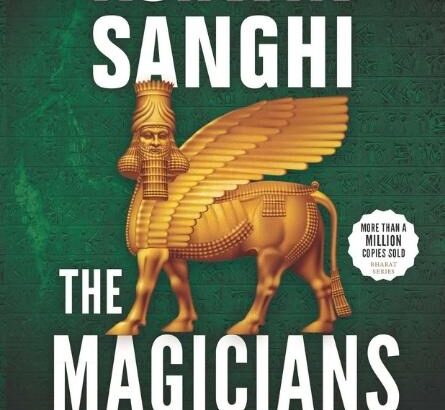
The Magicians of Mazda
YATHA AHU VAIRYO ATHA RATUSH ASHAT CHIT HACHA VANGHEUSH...
AS THE MASTER, SO IS THE JUDGE TO BE CHOSEN IN ACCORD WITH TRUTH.
A fleet of boats dock at the port of Sanjan in Gujarat in 720 CE. They carry eighteen thousand frightened souls fleeing the cruelty of Iran's Umayyad Caliphate. Chanting Sanskrit-like prayers, the high priest consecrates a sacred fire to thank their god, Ahura Mazda, leading them to a new home and hope. He uses a mysterious substance to spark the flame, but few know of its miraculous properties or provenance.
Centuries later, Parsi scientist Jim Dastoor is abducted from his Seattle laboratory and whisked away to Tehran. The Ayatollah believes Jim is the key to uncovering the ancient relic known as the Athravan Star and his men will do anything to possess it, even murder.
From the ancient ruins of Persepolis to the Taliban camps of Afghanistan, from the womb of an Udvada fire temple to the icy mountains of Kashmir, from the dreadful coffin cells of Tehran to the deathly calm of Diu's Tower of Silence, Jim and his historian wife, Linda, are sucked into a terrifying chase across vividly changing landscapes.
Deftly navigating between time and geography, The Magicians of Mazda travels backwards, through the epochs of Islamic jihad, Macedonian revenge, Achaemenid glory, messianic birth, Aryan schism-to the Vedic fount from where it began.
This is Ashwin Sanghi's most gripping and provocative novel yet.

